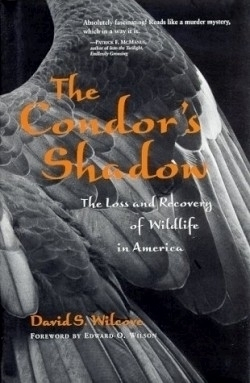The Condor's Shadow
The Loss and Recovery of Wildlife in America
A senior ecologist for the Environmental Defense Fund, Wilcove examines the rich, complex and sometimes regrettable history of human impact on North American wildlife. He argues that we rarely understand the natural world until it is severely stressed and degraded, and not just by bulldozers and chainsaws. Seemingly innocent and well-intentioned land use practices such as fire suppression, for example, result in landscape-scale perturbations with unforeseen outcomes (the risk of wildfires actually increases due to accumulated forest fuels, and endemic plant and animal species that benefit from periodic fires are extirpated or replaced by exotic species).
Compounding the impacts of unchecked land and water development, species introductions and overexploitation on wildlife is what Wilcove calls “generational amnesia”: Our inability as a society to recollect what is truly “natural” or “wild” prevents us from developing an ethic directed toward conservation of biodiversity. All is not completely lost, however, as Wilcove also discusses the varying degrees of success realized by contemporary conservation programs and evaluates their strengths and weaknesses.
A self-confessed birder, Wilcove’s depiction of ecosystem turmoil draws primarily on examples from the avian world, although selected case studies of other imperiled animals (wolves, Grand Canyon fishes, freshwater mussels to name a few) are also included. Wilcove’s treatments of non-avian subject matter such as his discussion of the Great Lakes fishery tend to be less authoritative than his sections on birds, however, and readers may need to consult source materials for clarification.
Still, this is an extremely informative and thought-provoking book for both initiated and neophyte conservationists. Wilcove’s style is clear and unencumbered by scientific jargon, and complex ecological phenomena are outlined with great accuracy.
The Condor’s Shadow—Wilcove’s first book—should serve as a useful introduction to the dynamics of wildlife resource conservation, and perhaps an aid to developing one’s own land ethic as well. (April).
Reviewed by
David Speas
Disclosure: This article is not an endorsement, but a review. The publisher of this book provided free copies of the book to have their book reviewed by a professional reviewer. No fee was paid by the publisher for this review. Foreword Reviews only recommends books that we love. Foreword Magazine, Inc. is disclosing this in accordance with the Federal Trade Commission’s 16 CFR, Part 255.

